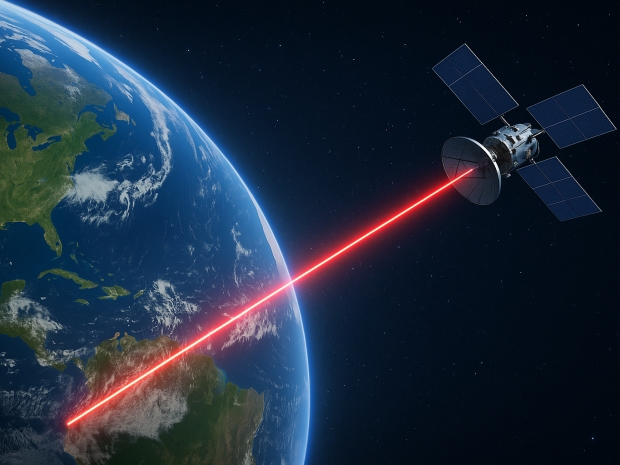The 2025 “Global Counterspace Capabilities” report, spanning February 2024 to February 2025, details more than 10,000 satellite interference incidents. Ukraine, Syria, and the Middle East are now hotspots for these high-tech skirmishes, many of which directly hit dual-use systems like Starlink.
Russia has been jamming civilian GPS and Starlink signals in Ukraine. China, is pushing ahead with more insidious tools — advanced cyber interference and co-orbital ASATs masquerading as inspector sats.
Astrolight chief executive Laurynas Mačiulis said: “Space has become a new front line, and the systems we rely on are increasingly being pulled into geopolitical conflict. RF-based communication is easily jammed, intercepted, and spoofed. That is not only technical, but even more so, a systemic risk.”
Laser communication — or lasercom — is now being pushed as the antidote to the mess RF tech has created. Mačiulis argues it’s far harder to tap or block laser beams than the bloated RF signals still in widespread use.
“We’ve spent decades relying on RF systems because they were the only viable option. But now... we need a system upgrade,” he said.
Astrolight is working on plugging the most fragile hole in the satcom chain: secure, fast links from satellites back to Earth. While sat-to-sat laser links are already speeding up networks like Starlink’s newer gen, the bit where that info hits the ground is still held together with slow, interference-prone RF.
Weather’s the biggest issue facing ground-based laser links, but Mačiulis reckons “site diversity and interoperability” will work around it. In other words, spread the lasers across different locations and connect the dots more smartly.
With regional tensions in the Baltic bubbling up, the stakes are anything but theoretical. “In case the war breaks out, our neighbouring Baltic Sea could become the battlefield. In that case, the victory in electronic warfare would rely heavily on who has the upper hand in terms of secure information sharing,” Mačiulis noted.
To that end, Astrolight’s POLARIS lasercom system, built for the Lithuanian Navy, is now on NATO’s radar to replace century-old signal lamps with something a little less 1918.
“We can’t afford to wait for a catastrophic outage to rethink how we communicate in space,” Mačiulis warned.




